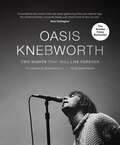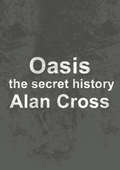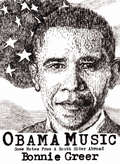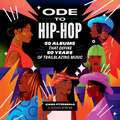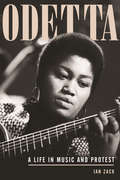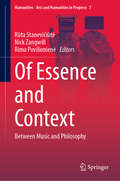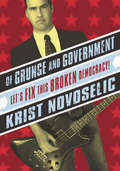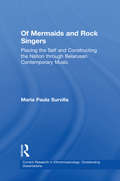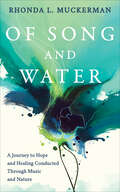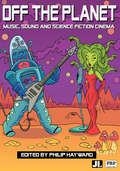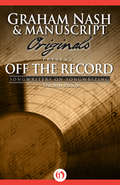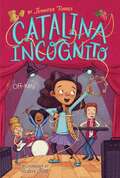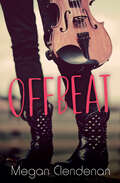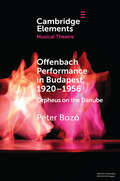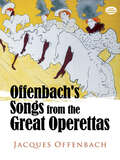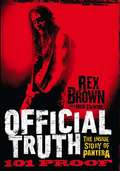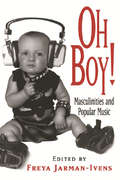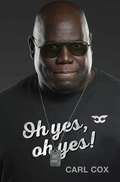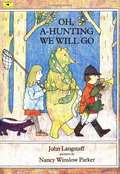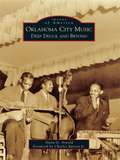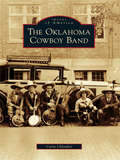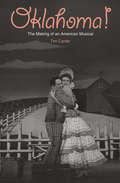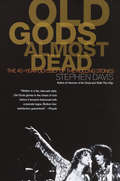- Table View
- List View
Oasis: THE SUNDAY TIMES BESTSELLER Two Nights That Will Live Forever
by Daniel Rachel Jill Furmanovsky***'A wonderful document of the last great gathering of the pre-internet age. No camera phones, no social media, just a band and its fans as one' -NOEL GALLAGHER On 10th and 11th August 1996, Oasis played the concerts that would define them, a band at the height of their powers playing to over 250,000 people.Twenty-five years on, this is the inside story of those nights, told through the breathtaking photographs of Jill Furmanovsky, granted unprecedented access to Oasis throughout that summer. Also includes newly obtained first-hand accounts from the people who were there - including Noel Gallagher and Alan McGee - in text by award-winning author Daniel Rachel. From relaxed rehearsals and warm-up concerts to Knebworth itself - backstage, onstage, flying high above the site - many of the stunning photographs in this book have never been seen anywhere before.This the definitive account of two nights that a generation will never forget.
Oasis: THE SUNDAY TIMES BESTSELLER Two Nights That Will Live Forever
by Daniel Rachel Jill Furmanovsky***'A wonderful document of the last great gathering of the pre-internet age. No camera phones, no social media, just a band and its fans as one' -NOEL GALLAGHER "STUNNING... The iconic images by Furmanovsky capture the glorious madness of it all."- ROLLING STONE MAGAZINE"Furmanovsky was a favourite of Oasis and given complete access at the event."-THE TELEGRAPHA ROUGH TRADE BOOK OF THE YEAROn 10th and 11th August 1996, Oasis played the concerts that would define them, a band at the height of their powers playing to over 250,000 people.Twenty-five years on, this is the inside story of those nights, told through the breathtaking photographs of Jill Furmanovsky, granted unprecedented access to Oasis throughout that summer. Also includes newly obtained first-hand accounts from the people who were there - including Noel Gallagher and Alan McGee - in text by award-winning author Daniel Rachel.From relaxed rehearsals and warm-up concerts to Knebworth itself - backstage, onstage, flying high above the site - many of the stunning photographs in this book have never been seen anywhere before.This the definitive account of two nights that a generation will never forget.
Oasis: The Secret History (The\secret History Of Rock Ser.)
by Alan CrossAlan Cross is the preeminent chronicler of popular music.Here he provides a history of Liam and Noel Gallagher and Oasis.This look at the "arrogant, irrational, vindictive, sometimes violent and occasionally just plain stupid" band is adapted from the audiobook.
Obama Music: Some Notes from a South Sider Abroad
by Bonnie GreerBorn and raised on the South Side of Chicago, London based author and playwright Bonnie Greer seeks to demonstrate that Barack Obama's Presidency is what she calls a 'South Side Presidency'. And that it is only the South Side of Chicago, with its history and culture and institutions that could have sent an African American, in this day and age, to the White House. 'Obama Music' is a mixture of anecdotes about her own growing up in one of America's most formidable Black communities, mixed in with observations on the origins and progress of the music of the South Side: gospel, blues, soul and jazz, and Barack and Michelle Obama's relation to the sound of their community. All of this is woven in with history ranging from the Great Migration at the end of World War One, to the and of the 60's, an era Obama himself has stated that he feels close to. This is not a conventional history book, nor a reporter-on-the campaign-trail account. 'Obama Music' is one African American woman's account of watching, from the other side of the ocean, history being made, a history rooted in the community of her birth, right in her own home town. Small, opinionated, personal, anecdotal and full of music and insights, this book can sit alongside the more heavyweight tomes as a footnote to the phenomenon that is Obama Music.
Ode to Hip-Hop: 50 Albums That Define 50 Years of Trailblazing Music
by Kiana FitzgeraldCelebrate the music that has shaped the culture and given us some of the greatest hits of all time with this vibrantly illustrated anthology, featuring 50 of the most lauded, controversial, and iconic hip-hop albums! From underground roots to mainstream popularity, hip-hop's influence on music and entertainment around the world has been nothing short of extraordinary. Ode to Hip-Hop chronicles the journey with profiles of fifty albums that have defined, expanded, and ultimately transformed the genre into what it is today. From 2 Live Crew's groundbreaking As Nasty As They Wanna Be in 1989 to Cardi B's similarly provocative Invasion of Privacy almost thirty years later, and more, Ode to Hip-Hop covers hip-hop from coast to coast. Organized by decade and with sidebars on fashion, mixtapes, and key players throughout, the result is a comprehensive homage to hip-hop, published just in time for the fiftieth anniversary. Enjoyed in the club, at a party, through speakers or headphones--the albums in this book deserve to be listened to again and again, for the next fifty years and beyond. Albums featured: Kurtis Blow (self-titled, 1980); The Message (Grandmaster Flash and the Furious Five, 1982); Run-D.M.C (self-titled, 1984), Hot, Cool & Vicious (Salt-N-Pepa, 1986); Paid in Full (Eric B. & Rakim, 1987); Straight Outta Compton (N.W.A, 1988); Lyte as a Rock (MC Lyte, 1988); As Nasty as They Wanna Be (2 Live Crew, 1989); Mama Said Knock You Out (LL Cool J, 1990); People's Instinctive Travels and the Paths of Rhythm (A Tribe Called Quest, 1990); The Chronic (Dr. Dre, 1992); Enter the Wu-Tang (36 Chambers) (Wu-Tang Clan, 1993); Black Reign (Queen Latifah, 1993); Doggystyle (Snoop Dogg, 1993); Illmatic (Nas, 1994); Ready to Die (The Notorious B.I.G., 1994); The Diary (Scarface, 1994); Funkdafied (Da Brat, 1994); Mystic Stylez (Three 6 Mafia, 1995); Hard Core (Lil' Kim, 1996); Ridin' Dirty (UGK, 1996); All Eyez On Me (2Pac, 1996); Supa Dupa Fly (Missy Elliott, 1997); Aquemini (Outkast, 1998); The Miseducation of Lauryn Hill (Lauryn Hill, 1998); It's Dark and Hell Is Hot (DMX, 1998); Things Fall Apart (The Roots, 1999); Da Baddest B***h (Trina, 2000); The Marshall Mathers LP (Eminem, 2000); The Blueprint (JAY-Z, 2001); Lord Willin' (Clipse, 2002); Get Rich or Die Tryin' (50 Cent, 2003); The College Dropout (Kanye West, 2004); Let's Get It: Thug Motivation 101 (Young Jeezy, 2005); King (T.I., 2006); Lupe Fiasco's the Cool (Lupe Fiasco, 2007); The Carter III (Lil Wayne, 2008); The State vs. Radric Davis (Gucci Mane, 2009); Pink Friday (Nicki Minaj, 2010); Watch the Throne (JAY-Z & Kanye West, 2011); Nothing Was the Same (Drake, 2013); To Pimp a Butterfly (Kendrick Lamar, 2015); DS2 (Future, 2015); Culture (Migos, 2017); Invasion of Privacy (Cardi B., 2018); Whack World (Tierra Whack, 2018); Eve (Rapsody, 2019); City on Lock (City Girls, 2020); Montero (Lil Nas X, 2021); Traumazine (Megan Thee Stallion, 2022)
Odetta: A Life in Music and Protest
by Ian ZackThe first in-depth biography of the legendary singer and "Voice of the Civil Rights Movement," who combatted racism and prejudice through her music.Odetta channeled her anger and despair into some of the most powerful folk music the world has ever heard. Through her lyrics and iconic persona, Odetta made lasting political, social, and cultural change. A leader of the 1960s folk revival, Odetta is one of the most important singers of the last hundred years. Her music has influenced a huge number of artists over many decades, including Bob Dylan, Janis Joplin, the Kinks, Jewel, and, more recently, Rhiannon Giddens and Miley Cyrus. But Odetta's importance extends far beyond music. Journalist Ian Zack follows Odetta from her beginnings in deeply segregated Birmingham, Alabama, to stardom in San Francisco and New York. Odetta used her fame to bring attention to the civil rights movement, working alongside Joan Baez, Harry Belafonte, and other artists. Her opera-trained voice echoed at the 1963 March on Washington and the Selma to Montgomery march, and she arranged a tour throughout the deeply segregated South. Her "Freedom Trilogy" songs became rallying cries for protesters everywhere.Through interviews with Joan Baez, Harry Belafonte, Judy Collins, Carly Simon, and many others, Zack brings Odetta back into the spotlight, reminding the world of the folk music that powered the civil rights movement and continues to influence generations of musicians today.Listen to the author's top five Odetta hits while you read:1. Spiritual Trilogy (Oh Freedom/Come and Go with Me/I'm On My Way) 2. I've Been Driving on Bald Mountain/Water Boy 3. Take This Hammer 4. The Gallows Pole 5. Muleskinner BluesAccess the playlist here: https://spoti.fi/3c2HnF4
Of Essence and Context: Between Music and Philosophy (Numanities - Arts and Humanities in Progress #7)
by Rima Povilionienė Rūta Stanevičiūtė Nick ZangwillThis book provides a new approach to the intersections between music and philosophy. It features articles that rethink the concepts of musical work and performance from ontological and epistemological perspectives and discuss issues of performing practices that involve the performer’s and listener’s perceptions. In philosophy, the notion of essence has enjoyed a renaissance. However, in the humanities in general, it is still viewed with suspicion. This collection examines the ideas of essence and context as they apply to music. A common concern when thinking of music in terms of essence is the plurality of music. There is also the worry that thinking in terms of essence might be an overly conservative way of imposing fixity on something that evolves. Some contend that we must take into account the varying historical and cultural contexts of music, and that the idea of an essence of music is therefore a fantasy. This book puts forward an innovative approach that effectively addresses these concerns. It shows that it is, in fact, possible to find commonalities among the many kinds of music. The coverage combines philosophical and musicological approaches with bioethics, biology, linguistics, communication theory, phenomenology, and cognitive science. The respective chapters, written by leading musicologists and philosophers, reconsider the fundamental essentialist and contextualist approaches to music creation and experience in light of twenty-first century paradigm shifts in music philosophy.
Of Grunge and Government: Let's Fix This Broken Democracy!
by Krist NovoselicThe Nirvana bassist &“offers specific platforms for electoral reform . . . as well as charming anecdotes about rock &‘n&’ roll as a pursuit of happiness&” (Sarah Vowell, The New York Times Book Review). A memoir of both music and politics, Of Grunge and Government tells Krist Novoselic&’s story of how during his years with Kurt Cobain and Nirvana, the band made a point of playing benefits—the Rock for Choice show, a concert for gay rights, a fundraising gig for the Balkan Women&’s Aid Fund—and how in the ensuing years he has dedicated himself to being a good citizen and participating in American democracy. In this book he shares stories about making music and making a statement—as well as inspiring ideas for anyone who wants to advance progressive causes, to become a more active part of the community, and to make sure our votes count and our voices are heard.
Of Mermaids and Rock Singers: Placing the Self and Constructing the Nation THrough Belarusan Contemporary Music (Current Research In Ethnomusicology: Outstanding Dissertations Ser. #2)
by Maria Paula SurvillaThis book examines the roles, functions, and interpretations of rock music as part of the initial push towards exploring national and personal identities in a newly independent Belarus. It also includes a summary of rock concert activity in Belarus.
Of Song and Water: A Journey to Hope and Healing Conducted Through Music and Nature
by Rhonda L MuckermanA musician, bereaved wife and mother&’s memoir of finding healing through music and the natural world while facing family illness and the loss of her child. Of Song and Water is a journey along the currents of music, nature, and healing which form the basis of life. Follow the life of musician, conductor and dreamer, Rhonda Levine Muckerman, as she and her family face the challenges of addiction, loss, and illness. After the death of their son Eliot, followed by her husband's diagnosis of Parkinson's disease, Rhonda makes an inner journey from her early formation as a professional conductor, through a landscape of dreams, intuition and waterways to find ultimate healing for herself and her family. Of Song and Water is a story for anyone who wants to discover a path to healing within, accompanied by the song and water of life.
Off the Planet: Music, Sound and Science Fiction Cinema (Encounters)
by Philip HaywardOver the last decade, music and sound have been increasingly recognized as an important—if often neglected—aspect of film production and film studies. Off the Planet comprises a lively, stimulating, and diverse collection of essays on aspects of music, sound, and Science Fiction cinema. Following a detailed historical introduction to the development of sound and music in the genre, individual chapters analyze key films, film series, composers, and directors in the postwar era. The first part of the anthology profiles seminal 1950s productions such as The Day the Earth Stood Still, the first Godzilla film, and Forbidden Planet. Later chapters analyze the work of composer John Williams, the career of director David Cronenberg, the Mad Max series, James Cameron’s Terminators, and other notable SF films such as Space Is the Place, Blade Runner, Mars Attacks!, and The Matrix. Off the Planet is an important contribution to the emerging body of work in music and film. Contributors include leading film experts from Australia, Canada, Japan, New Zealand, the United Kingdom, and the United States.Distributed for John Libbey Publishing
Off the Record
by Graham Nash Manuscript OriginalsCan you remember exactly where you were the first time you heard "What a Wonderful World" and how it made you feel? Did you play Paul Williams's "We've Only Just Begun" at your wedding? Throughout time, certain songs and their lyrics have come to act as key emotional landmarks in our hearts and minds and continue to resonate throughout our lives. Graham Nash and Manuscript Originals present Off the Record, a premier collection of twenty-five of the most talented and successful songwriters of all time. These writers share their thoughts and memories about the creation of their classic songs, how they fell in love with music, their careers in the music business, and the art of songwriting in over two hundred beautifully designed pages of personal interviews illuminated with historical archival photographs of each artist and the first performers or groups to record the songs. In addition, each songwriter has personally created an original handwritten manuscript of the lyrics to his or her featured song, which is artfully displayed in that songwriter's chapter.Among the songwriters and songs included in Off the Record are Graham Nash on "Our House," Carole King on "I Feel the Earth Move," John Lee Hooker on "Boom Boom," Grace Slick on "White Rabbit," Ben E. King on "Stand by Me", Mac Davis on "In the Ghetto," Paul Williams on "We've Only Just Begun," Peter Yarrow on "Puff, the Magic Dragon," George David Weiss on "What a Wonderful World," Ervin Drake on "It Was a Very Good Year," Jimmie Davis on "You Are My Sunshine," and many more.Off the Record is a celebration of the art of songwriting, these twenty-five classic songs, and the lives and talents of their remarkable writers. We hope you will enjoy this musical journey through some of the most beloved songs of our times, which have impacted the lives of people throughout the world.
Off-Key (Catalina Incognito #3)
by Jennifer TorresOne Day at a Time meets Mindy Kim in this third book in a charming new chapter book series about Catalina Castaneda, a Mexican American girl with a magical sewing kit who wants to start a band.Catalina can&’t wait for the upcoming school talent show! Along with some of her classmates, they decide to rock out and form a band for the big day. But Catalina has some...specific ideas on how the band should look and sound. Can Catalina learn to be part of the band, or will she find herself working on a solo act?
Offbeat (Orca Limelights)
by Megan ClendenanFourteen-year-old Rose is sure she's going to become a folk-music sensation, with her best friend, Shilo, at her side. But first Rose needs to convince her mom to keep paying for her expensive violin lessons. Her mom wants her to join the youth symphony and focus on classical music, in preparation for a music degree at university. When Rose enters a fiddle competition with a unique prize for the winner, she hopes to show her mom she can really can make it as a folk musician. This short novel is a high-interest, low-reading level book for middle-grade readers who are building reading skills, want a quick read or say they don’t like to read!
Offenbach Performance in Budapest, 1920–1956: Orpheus on the Danube (Elements in Musical Theatre)
by Péter BozóAs a legacy of the Habsburg Empire, performances of Jacques Offenbach's musical stage works played an important role in Budapest musico-theatrical life in the twentieth century. However, between the collapse of the Empire and the 1956 anti-Soviet revolution, political ideologies strongly influenced the character of these productions, when they took place. Public performances of Offenbach's works were prohibited between 1938 and 1945 and they became the bases for propagandadistic adaptations in the 1950s. This element explores how the local operetta tradition and the vogue of operettas featuring composers as characters during the interwar period were also important factors in how Offenbach's stage works were performed in mid-twentieth century Budapest in versions that sometimes bore little resemblance to the originals.
Offenbach's Songs from the Great Operettas (Dover Opera Scores)
by Jacques OffenbachJacques Offenbach (1819-80) ranks among the greatest composers of lighthearted operettas, and his famous songs continue to charm millions who know neither their names nor their composer. This volume features the sheet music for 38 popular songs from 14 operettas. All are reproduced from the original sheet music -- a few from the original piano-vocal scores, and some with lively pictorial covers. Contents include four songs from Orpheé aux enfers (Orpheus in the Underworld), five songs from La belle Hélène, four songs from La vie parisienne, six songs from La Grande Duchesse de Gérolstein, seven songs from La Périchole, three songs from La fille du tambour-major, and more. The complete French texts appear on the music pages, and a separate section offers English translations. All songs were chosen by Antonio de Almeida, a renowned conductor and authority on Offenbach, who also provides an informative Introduction.
Official Truth, 101 Proof: The Inside Story of Pantera
by Rex BrownFew heavy metal acts survived the turmoil of the early 1990s music scene. Pantera was different. Instead of humoring the market, the band instead demanded that the audience come to them by releasing a series of fiercely uncompromising, platinum albums, including Vulgar Display of Power and Far Beyond Driven-two #1 albums that, like Metallica's And Justice for All, sold millions of copies despite minimal airplay.Rex Brown's memoir is the definitive account of life inside one of rock's biggest bands, which succeeded against all odds but ultimately ended in tragedy when iconic lead guitarist Darrell "Dimebag" Abbott was murdered mid-performance by a deranged fan.This is a lucid account of the previously untold story behind one of the most influential bands in heavy metal history, written by the man best qualified to tell the truth about those incredible and often difficult years of fame and excess.
Oh Boy!: Masculinities and Popular Music
by Freya Jarman-IvensFrom Muddy Waters to Mick Jagger, Elvis to Freddie Mercury, Jeff Buckley to Justin Timberlake, masculinity in popular music has been an issue explored by performers, critics, and audiences. From the dominance of the blues singer over his "woman" to the sensitive singer/songwriter, popular music artists have adopted various gendered personae in a search for new forms of expression. Sometimes these roles shift as the singer ages, attitudes change, or new challenges on the pop scene arise; other times, the persona hardens into a shell-like mask that the performer struggles to escape. Oh Boy! Masculinities and Popular Music is the first serious study of how forms of masculinity are negotiated, constructed, represented and addressed across a range of popular music texts and practices. Written by a group of internationally recognized popular music scholars—including Sheila Whiteley, Richard Middleton, and Judith Halberstam—these essays study the concept of masculinity in performance and appearance, and how both male and female artists have engaged with notions of masculinity in popular music.
Oh yes, oh yes!
by Carl CoxFrom warm up DJ at the birth of Acid House to global main stage headline artist today, Carl Cox continues to inspire and influence audiences and artists. Carl has been everything from a recording artist and producer to label owner, radio DJ and broadcaster. He is still all these things and much more with his star shining brighter than ever. Oh yes, oh yes! tells the story, in his own words, of the man known as 'The Three Deck Wizard' on the rave scene before evolving into 'The People's Choice' and the King of Ibiza; a DJ and artist who remains at the very top of his game and continues to innovate and thrill music-lovers on the world's biggest stages.Starting off as a shelf-stacker, grass cutter and scaffolder in the south London suburbs, Carl's phenomenal talents as a DJ grew out of a love of music nurtured in his parents' front room. In Oh yes, oh yes! he takes us to the heart of the party, from the UK rave scene to Burning Man and from Ibiza to Melbourne, and a career that in in many ways is the story of club culture and an inspiration to all those who choose to follow their dreams turning him into a living legend along the way. Oh yes, oh yes! is a remarkably candid and intimate portrait of an artist who has never lost touch with the people who share the dancefloor with him.'Carl is one of the few true pioneers of UK club culture internationally. He has opened the door to so many DJs and inspired so many, including me.' Gilles Peterson'Carl Cox wrote the script of what it means to be a DJ.' David Guetta'People use the term legend far too easily for my liking but Carl is legend personified.' Grooverider'Carl has always been my favourite. He is the complete DJ, also the DJs DJ. Records come to life when he plays them, rooms come to life when he rocks them. His enthusiasm is infectious, his commitment complete.' Norman Cook aka Fatboy Slim
Oh yes, oh yes!
by Carl CoxFrom warm up DJ at the birth of Acid House to global main stage headline artist today, Carl Cox continues to inspire and influence audiences and artists. Carl has been everything from a recording artist and producer to label owner, radio DJ and broadcaster. He is still all these things and much more with his star shining brighter than ever. Oh yes, oh yes! tells the story, in his own words, of the man known as 'The Three Deck Wizard' on the rave scene before evolving into 'The People's Choice' and the King of Ibiza; a DJ and artist who remains at the very top of his game and continues to innovate and thrill music-lovers on the world's biggest stages.Starting off as a shelf-stacker, grass cutter and scaffolder in the south London suburbs, Carl's phenomenal talents as a DJ grew out of a love of music nurtured in his parents' front room. In Oh yes, oh yes! he takes us to the heart of the party, from the UK rave scene to Burning Man and from Ibiza to Melbourne, and a career that in many ways is the story of club culture and an inspiration to all those who choose to follow their dreams turning him into a living legend along the way. Oh yes, oh yes! is a remarkably candid and intimate portrait of an artist who has never lost touch with the people who share the dancefloor with him.'Carl is one of the few true pioneers of UK club culture internationally. He has opened the door to so many DJs and inspired so many, including me.' Gilles Peterson'Carl Cox wrote the script of what it means to be a DJ.' David Guetta'People use the term legend far too easily for my liking but Carl is legend personified.' Grooverider'Carl has always been my favourite. He is the complete DJ, also the DJs DJ. Records come to life when he plays them, rooms come to life when he rocks them. His enthusiasm is infectious, his commitment complete.' Norman Cook aka Fatboy Slim
Oh, A-Hunting We Will Go (Fountas & Pinnell LLI Blue #Level E)
by John Langstaff Nancy ParkerOld and new verses for a popular folk song about hunting and capturing an animal--and then letting him go.
Oklahoma City Music: Deep Deuce and Beyond (Images of America)
by Charles Burton Jr. Anita G. ArnoldOklahoma City's rich music history traces back to Deep Deuce, the heart of the African American community that became an important resource for national jazz and blues bands seeking talented musicians who were often classically trained. Two icons and many legends are among the famous sons and daughters who lived in this cultural Mecca. Oklahoma City's Music: Deep Deuce and Beyond details the birth and growth of music in Oklahoma City's African American community from the 1920s until the late 1990s. Musical influences of families and individuals, venues, dance, and fashion blend with new-era traditions such as parades, jam sessions, and street parties to create a culture that became well known. This book explores how the seeds of music so deeply planted in the early days continue to produce great musicians and how the influences of those icons will vibrate throughout future international generations.
Oklahoma Cowboy Band, The (Images of America)
by Carla ChlouberThe Oklahoma Cowboy Band was the first western string band in the nation to broadcast over the radio and appear on vaudeville, drawing large audiences throughout the Midwest and Northeast. The band began in Ripley as Billy McGinty's Cowboy Band and first played over radio station KFRU in Bristow in May 1925. Billy McGinty was a Rough Rider with Theodore Roosevelt and performed in Buffalo Bill's Wild West Show. The public responded to the broadcast of his band with a steady stream of telegrams, telephone calls, and letters asking for more of that old-time cowboy music. Soon Otto Gray and his wife, Mommie, of Stillwater joined the band, with both performing rope tricks, Mommie singing sad songs, and their son, Owen, performing comedy routines as "the Uke Buster." Renamed Otto Gray and His Oklahoma Cowboys, the band traveled for a decade to such cities as St. Louis, Chicago, Cincinnati, Indianapolis, Pittsburgh, and Syracuse. Its custom-built Cadillacs drew crowds wherever the band went. By the early 1930s, other acts were copying the band's cowboy themes and songs, and Otto Gray's lawyers threatened legal action. The lawyers met with only limited success, though, and today the cowboy image is firmly established in country music, thanks in large part to the early success of Billy McGinty, Otto Gray, and the Oklahoma Cowboy Band.
Oklahoma!: The Making of an American Musical (Broadway Legacies Ser.)
by Tim CarterThe backstage story of the timeless Broadway hit, and how Rodgers and Hammerstein brought it to life: &“Meticulously researched&” (Publishers Weekly). Oklahoma! premiered on Broadway in 1943 under the auspices of the Theatre Guild, and today it is performed more frequently than any other Rodgers and Hammerstein musical. In this book, Tim Carter offers the first fully documented history of the making of this celebrated American musical. Drawing on research from rare theater archives, manuscripts, journalism, and other sources, Carter records every step in the development of Oklahoma! The book is filled with rich and fascinating details about how Rodgers and Hammerstein first came together, the casting process, how Agnes de Mille became the show&’s choreographer, and the drafts and revisions that ultimately gave the musical its final shape. Carter also shows the lofty aspirations of both the creators and producers and the mythmaking that surrounded Oklahoma! from its very inception, and demonstrates just what made it part of its times.
Old Gods Almost Dead: The 40-year Odyssey of the Rolling Stones
by Stephen DavisThe acclaimed, bestselling rock-and-roll biographer delivers the first complete, unexpurgated history of the world's greatest band. The saga of the Rolling Stones is the central epic in rock mythology. From their debut as the intermission band at London's Marquee Club in 1962 through their latest record-setting Bridges to Babylon world tour, the Rolling Stones have defined a musical genre and experienced godlike adulation, quarrels, addiction, legal traumas, and descents into madness and death_while steadfastly refusing to fade away. Now Stephen Davis, the New York Times bestselling author of Hammer of the Gods and Walk This Way, who has followed the Stones for three decades, presents their whole story, replete with vivid details of the Stones' musical successes and personal excesses. Born into the wartime England of air-raid sirens, bombing raids, and strict rationing, the Rolling Stones came of age in the 1950s, as American blues and pop arrived in Europe. Among London's most ardent blues fans in the early 1960s was a short blond teenage guitar player named Brian Jones, who hooked up with a lorry driver's only son, Charlie Watts, a jazz drummer. At the same time, popular and studious Michael Philip Jagger--who, as a boy, bawled out a phonetic version of "La Bamba" with an eye-popping intensity that scared his parents--began sharing blues records with a primary school classmate, Keith "Ricky" Richards, a shy underachiever, whose idol was Chuck Berry. In 1962 the four young men, joined by Bill Perks (later Wyman) on bass, formed a band rhythm and blues band, which Brian Jones named the "the Rollin' Stones" in honor of the Muddy Waters blues classic. Using the biography of the Rolling Stones as a narrative spine, Old God Almost Dead builds a new, multi-layered version of the Stones' story, locating the band beyond the musical world they dominated and showing how they influenced, and were influenced by, the other artistic movements of their era: the blues revival, Swinging London, the Beats, Bob Dylan's Stones-inspired shift from protest to pop, Pop Art and Andy Warhol's New York, the "Underground" politics of the 1960s, Moroccan energy and European orientalism, Jamaican reggae, the Glam and Punk subcultures, and the technologic advances of the video and digital revolution. At the same time, Old Gods Almost Dead documents the intense backstage lives of the Stones: the feuds, the drugs, the marriages, and the affairs that inspired and informed their songs; and the business of making records and putting on shows. The first new biography of the Rolling Stones since the early 1980s, Old Gods Almost Dead is the most comprehensive book to date, and one of the few to cover all the band's members. It is a celebration of the Rolling Stones as an often courageous, often foolish gang of artists who not only showed us new worlds, but new ways of living in them. It is a saga as raunchily, vibrantly entertaining as the Stones themselves.
